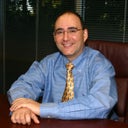The bridge of my nose has sunken pass the point and it's worse when I'm stressed or without proper sleep.It has bothered me since I was 30. Now in my 50's and would like it filled but have not seen anyone else with that problem. I was told it was a bad place for Restylane but the doctor has agreed to do it.
Answers (12)
From board-certified doctors and trusted medical professionals
Dr. Scott Trimas, MD

Dr. Scott Trimas, MD
Board Certified Facial Plastic Surgeon
Answer
Dr. Donald B. Yoo, MD, FACS

Dr. Donald B. Yoo, MD, FACS
Board Certified Facial Plastic Surgeon
Answer
Dr. Stephen Prendiville, MD

Dr. Stephen Prendiville, MD
Board Certified Facial Plastic Surgeon
Answer
Dr. Ron Shelton, MD

Dr. Ron Shelton, MD
Dermatologic Surgeon, Board Certified in Dermatology
Answer
Dr. Kevin M. Robertson, MD, FACS

Dr. Kevin M. Robertson, MD, FACS
Board Certified Facial Plastic Surgeon
Answer
Dr. Raffy Karamanoukian, MD, FACS

Dr. Raffy Karamanoukian, MD, FACS
Board Certified Plastic Surgeon
Answer
Dr. Tanveer Janjua, MD

Dr. Tanveer Janjua, MD
Board Certified Facial Plastic Surgeon
Answer
Dr. Theda C. Kontis, MD

Dr. Theda C. Kontis, MD
Board Certified Facial Plastic Surgeon
Answer
Dr. Wilfred Brown, MD
Dr. Wilfred Brown, MD
Board Certified Plastic Surgeon
Answer
More Restylane Questions
See all Restylane Q&AWE SEND PRETTY
EMAILS
What’s trending? Who’s turning heads? Which TikTok myths need busting? We’ve got you. No fluff, no gatekeeping—just real talk. Get our free, unfiltered newsletter.